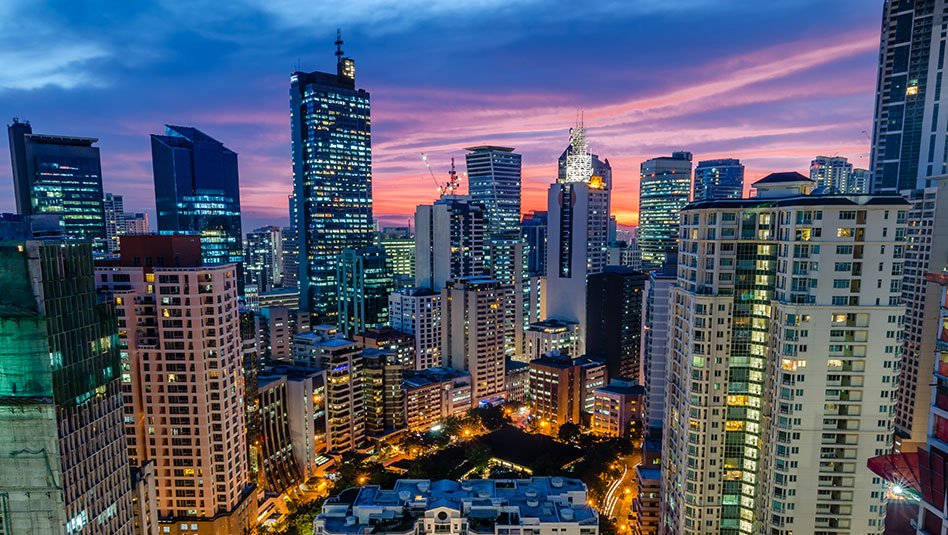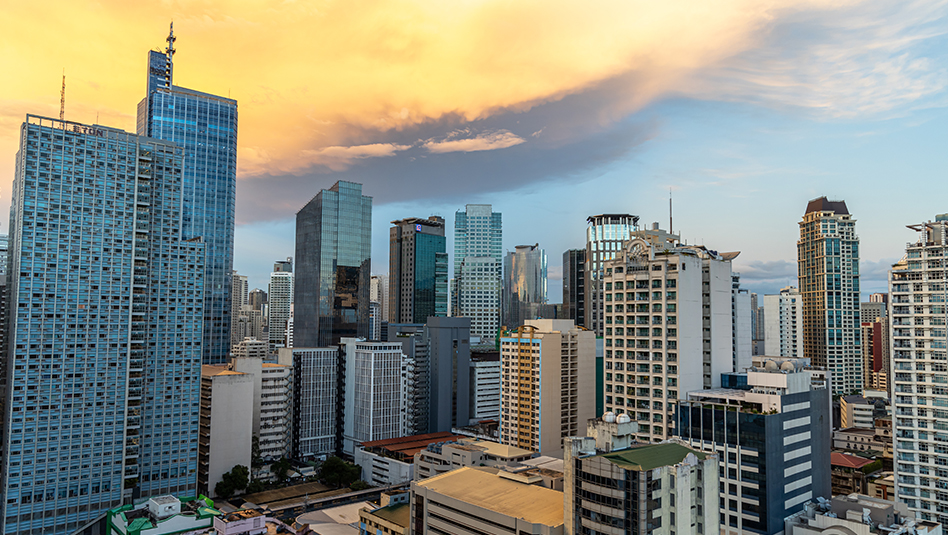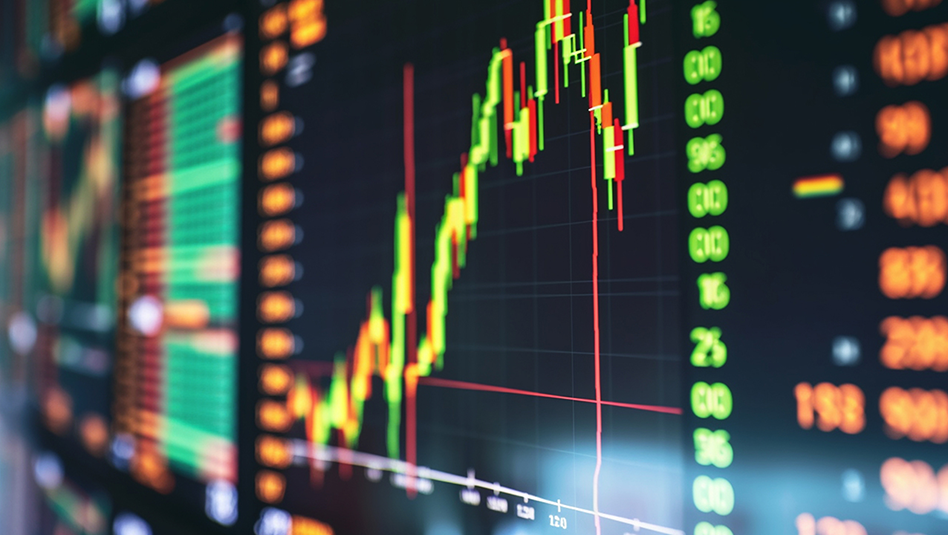Sub-sector: Oil and Gas
Access this content:
If you are an existing investor, log in first to your Metrobank Wealth Manager account.
If you wish to start your wealth journey with us, click the “How To Sign Up” button.

Fundamental View
AS OF 27 Jun 2025KORGAS is Korea’s sole integrated gas utility company and a quasi-sovereign credit, maintaining an effective monopoly over E&P, procurement, storage and production, transmission, and wholesale distribution of natural gas.
Its credit profile is supported by its dominant position in the natural gas and hydrogen utility market, as well as strong government support, which partially offsets the credit impact of delayed and incomplete pass-through of gas procurement costs during periods of natural gas price surges, such as in FY22.
We expect its credit profile to improve in FY25, aided by stabilizing oil and LNG prices, improved tariff adjustments, and ongoing government backing, which should partially mitigate concerns related to its larger planned capex.
Business Description
AS OF 27 Jun 2025- KORGAS is 54.6% owned directly/indirectly by the Korean government (Central Government 26.2%, KEPCO 20.5%, Local Government 7.9%). It is Korea's only fully integrated gas utility, holding an effective monopoly over E&P, procurement, storage, transmission, and wholesale distribution of natural gas. KORGAS plays a key role in Korea’s energy transition, with plans to increase LNG generation capacity by 56% by 2036 from 2022. KORGAS was also designated as Korea’s sole hydrogen distribution agency in 2020.
- The Korean natural gas sector is split into wholesale and retail segments. KORGAS is the exclusive wholesaler, while city gas companies manage retail supply via regional networks. In FY24, 46% of KORGAS's gas sales were to domestic LNG-fired power generation companies (gencos, including KEPCO subsidiaries and IPPs), with the remaining 54% sold to city gas and heating companies.
- KORGAS's operations are heavily regulated, with government oversight on tariffs, investments, and expansion. Besides domestic LNG, KORGAS owns overseas E&P assets to enhance energy security. In line with government policy, KORGAS is investing in hydrogen infrastructure and renewables, using its gas network and expertise to support Korea’s clean energy transition.
Risk & Catalysts
AS OF 27 Jun 2025Risks: (1) delayed tariff adjustments; (2) larger-than-expected debt-funded capex; (3) domestic regulatory and policy risks; (4) overseas E&P volatility, including political, operational and market risks; (5) depreciation of the KRW against the USD; (6) liquidity shortfalls; (7) asset impairment risks due to decline in global oil and gas prices.
Catalysts: (1) stronger-than-expected government support; (2) tariff increases; (3) stabilizing fuel prices; (4) hydrogen and green energy initiatives; (5) regulated city gas operations with a formula-based cost pass-through system.
Key Metric
AS OF 27 Jun 2025| KRW bn | FY20 | FY21 | FY22 | FY23 | FY24 |
|---|---|---|---|---|---|
| Debt to Book Cap | 75.7% | 75.8% | 81.3% | 80.7% | 79.0% |
| Net Debt to Book Cap | 74.6% | 74.2% | 79.8% | 79.1% | 77.2% |
| Debt/Equity | 312.4% | 313.3% | 434.4% | 418.0% | 377.0% |
| Gross Leverage | 9.4x | 9.1x | 9.9x | 11.6x | 8.0x |
| Net Leverage | 9.3x | 8.9x | 9.7x | 11.4x | 7.8x |
| Interest Coverage | 3.4x | 4.8x | 5.1x | 2.2x | 3.4x |
| EBITDA Margin | 12.3% | 11.4% | 8.8% | 8.0% | 13.3% |
CreditSight View Comment
AS OF 02 Jul 2025We maintain our O/P recommendation on KORGAS. Its credit profile is supported by its essential policy role as South Korea’s only vertically integrated natural gas utility and a key energy supplier, which results in strong government backing, a dominant market position, and excellent funding access—offsetting its high leverage. We anticipate its credit profile will strengthen in FY25, driven by stable oil and LNG prices, improved tariff adjustments, and continued government support, which should help address concerns over higher planned capex. We find KORGAS attractive relative to lower-rated Chinese SOEs, BBB-rated low beta Korean corporates, and other Korean quasi-sovereigns. We recommend KORGAS to investors seeking ~5% safe carry in the Asia credit space.
Recommendation Reviewed: July 02, 2025
Recommendation Changed: June 27, 2023
Who We Recommend
Sultanate of Oman

Korea Electric Power Corp.

Macquarie Bank



How may we help you?
Search topics about wealth insights and investments.Access this content:
If you are an existing investor, log in first to your Metrobank Wealth Manager account.
If you wish to start your wealth journey with us, click the “How To Sign Up” button.

Fundamental View
AS OF 18 Jun 2025Pertamina enjoys very strong linkages with the Government of Indonesia (GoI) and is assured of extraordinary support in times of distress.
Lower expected Brent crude prices YoY could weigh on its upstream margins and overall EBITDA (given the upstream business accounts for >65% of consolidated EBITDA).
Although leverage typically remains low, Pertamina incurs large capex spending that could pressure its free cash flow generation.
High persisting dividend outflows could restrain free cash flow improvements.
Business Description
AS OF 18 Jun 2025- Pertamina is involved in a broad range of upstream and downstream oil, gas, geothermal and petrochemical operations.
- In the upstream sector, it engages in the exploration, development and production and supply of crude oil, natural gas and geothermal energy.
- As for the downstream sector, the company carries out refining, marketing and distribution of oil, gas, fuel products and petrochemical and other non-fuel products.
- As of 31 December 2024, its total proved oil reserves stood at ~1,394 mmbbl (mn barrels of oil) and gas reserves stood at ~1,058 mmboe (mn barrels of oil equivalent). Its average daily oil and gas production was ~1,045,000 boe per day in FY24. The company owns and operates 6 refineries in Indonesia.
- Under the Public Service Obligation (PSO) mandate, Pertamina is responsible for providing certain grades of motor gasoline, automotive diesel oil, kerosene and LPG at subsidized prices. The subsidized retail price is often times lower than the cost of production, creating a shortfall, for which it receives reimbursements from the GoI.
Risk & Catalysts
AS OF 18 Jun 2025Pertamina’s profitability is materially affected by volatility in oil & gas prices. Prolonged periods of low oil prices could hurt upstream earnings that form the bulk of overall EBITDA (>65%).
As retail prices of certain fuel products are regulated, realized prices may be below its cost of sales.
Pertamina has to initially absorb the shortfall between the regulated retail price and the cost of producing and distributing certain fuel products. If the price of crude oil exceeds the price ceiling set by the GoI, the company may receive insufficient subsidy reimbursements.
Capex typically remains elevated and which pressurizes its free cash flow generation.
Key Metric
AS OF 18 Jun 2025| $ mn | FY20 | FY21 | FY22 | FY23 | FY24 |
|---|---|---|---|---|---|
| Debt to Book Cap | 38.5% | 41.2% | 42.1% | 37.6% | 34.9% |
| Net Debt to Book Cap | 18.9% | 21.9% | 12.5% | 8.5% | 12.3% |
| Debt/Total Equity | 62.5% | 70.0% | 72.7% | 60.4% | 53.6% |
| Debt/Total Assets | 28.3% | 29.9% | 30.8% | 27.4% | 26.3% |
| Gross Leverage | 2.4x | 2.5x | 1.9x | 1.9x | 2.2x |
| Net Leverage | 1.2x | 1.3x | 0.6x | 0.4x | 0.8x |
| Interest Coverage | 7.8x | 8.7x | 11.2x | 8.9x | 7.5x |
| EBITDA Margin | 19.9% | 16.0% | 16.7% | 17.7% | 14.3% |
CreditSight View Comment
AS OF 18 Jun 2025We maintain our Market perform recommendation on Pertamina at the issuer level and remove our preference for Pertamina’s 2041-2048 as our preference has played out, with the bonds tightening 19-24 bp since we expressed our preference for these bonds. We think current spread levels are fair given the downside risk of the O&G sector’s cyclicality and persisting policy uncertainty from Indonesia’s new sovereign wealth fund Danantara. That said, we continue to view Pertamina as a safe-haven pick and remain comfortable with Pertamina’s full state-ownership, timely fuel subsidy and compensation from the Indonesian government, positive free cash flow generation, robust credit metrics and our expectation for Pertamina’s strategic policy role to sustain even amidst macro headwinds and Danantara.
Recommendation Reviewed: June 18, 2025
Recommendation Changed: May 16, 2023
Who We Recommend
Sultanate of Oman

Korea Electric Power Corp.

Korea Gas Corp.



How may we help you?
Search topics about wealth insights and investments.Access this content:
If you are an existing investor, log in first to your Metrobank Wealth Manager account.
If you wish to start your wealth journey with us, click the “How To Sign Up” button.

Fundamental View
AS OF 05 Jun 2025We expect the credit profile of Sinopec, which is one of the three Chinese national oil companies (NOCs) to continue to be underpinned by its strategic role in China’s energy security and the resulting strong government support.
We expect Sinopec’s standalone credit profile to remain supported in FY24 by resilient refined oil demand and improving demand for chemical products as industrial activities pick up and the destocking trend ends.
To note, we use the financials of HKEx listed Sinopec Corp (386.HK) as a proxy for the credit profile of its parent, the obligor of the outstanding $ bonds (BBG: SINOPE).
Business Description
AS OF 05 Jun 2025- Sinopec Group is a Chinese integrated oil and gas (O&G) company and is one of the largest globally & domestically. In 3Q24, 56.4% of Sinopec Corp' external revenues came from marketing and distribution (i.e. retail and direct sales of refined oil), 13.9% from chemicals, 5.1% from refining, and 5.0% from E&P. Corporate and others segment accounted for the remaining 19.6% of sales revenue, consisting of import and export business, R&D and managerial activities.
- The refining segment purchases crude oil from third parties as well as the E&P segment of the company, and processes crude oil into refined petroleum product. Most of the gasoline, diesel and kerosene are sold internally to the marketing and distribution segment of the company; part of the chemical feedstock is sold internally to the chemical segment, and the other refined petroleum products are sold externally to both domestic and overseas customers. The marketing and distribution segment purchases refined oil products from the refining segment and third parties, and mainly distributes to domestic customers via its wholesale and retail networks.
- In 9M24, Sinopec's total oil and gas output was 386.06 mn barrels of oil equivalent, up 2.6% YoY; this included 190.42/20.87 mmbbls (+1.2%/-6.6%) of domestically produced/overseas crude oil, as well as 1,084 bcf of natural gas (+5.6% YoY). The average realized price of its crude oil and natural gas was $76.6/bbl (+1.1% YoY)and $7.48/thousand cubit feet (+5.4% YoY)respectively.
Risk & Catalysts
AS OF 05 Jun 2025Risks: Lower-than-expected domestic sales of refined oil and chemical products due to a severe economic downturn, higher-than-expected crude oil and gas feedstock costs resulted from geopolitical tensions, elevated inventory losses due to tumbling oil & gas prices, and large capex overrun result in a weaker standalone credit profile. However, we expect the strong government support to offset these downside risks. US sanction related headline risks due to US-China tension and other geopolitical risks.
Catalysts: inflow into China $ bonds as a result of improving China macro outlook and US-China relationship; stronger-than-expected recovery in chemical product demand.
Key Metric
AS OF 05 Jun 2025| RMB bn | FY20 | FY21 | FY22 | FY23 | 3Q24 |
|---|---|---|---|---|---|
| Total Debt/Capitalization | 25.3% | 25.6% | 27.5% | 31.5% | 33.1% |
| Net Debt/Capitalization | 9.4% | 7.6% | 16.3% | 19.8% | 21.4% |
| Total Debt/Total Equity | 33.8% | 34.5% | 38.0% | 46.1% | 49.4% |
| Total Debt/Total Assets | 17.2% | 16.7% | 18.3% | 21.7% | 22.9% |
| Total Debt/EBITDA | 1.5x | 1.2x | 1.5x | 2.0x | 2.3x |
| Net Debt/EBITDA | 0.6x | 0.4x | 0.9x | 1.3x | 1.5x |
| EBITDA/Gross Interest | 16.8x | 20.1x | 16.1x | 14.5x | 14.2x |
| EBITDA Margin | 9.5% | 9.4% | 7.0% | 6.8% | 5.9% |
CreditSight View Comment
AS OF 05 Jun 2025We affirm our Market perform recommendation on Sinopec. A-rated Chinese state-owned enterprises (SOEs), including Sinopec are trading tight due to a lack of new supply and as investors fly to quality amid macro uncertainties in China. We continue to prefer AA-rated Korean quasi-sovereign names for safe carry (like KOROIL, KORGAS, KEPCO) and higher-beta Chinese SOEs for spread pickup.
Recommendation Reviewed: June 05, 2025
Recommendation Changed: May 03, 2021
Who We Recommend
Sultanate of Oman

Korea Electric Power Corp.

Korea Gas Corp.



How may we help you?
Search topics about wealth insights and investments.Access this content:
If you are an existing investor, log in first to your Metrobank Wealth Manager account.
If you wish to start your wealth journey with us, click the “How To Sign Up” button.

Fundamental View
AS OF 27 May 2025Petron’s FY24 results improved slightly; we expect Petron’s credit metrics to remain flat to improve slightly in FY25 owing to higher capex and flattish % YoY EBITDA growth amid a single-digit YoY decline in sales volume growth though partially supported by lower crude oil input costs
About two-third of its total revenues are derived from the Philippines and are indexed to Dubai crude prices, which allows for smooth cost pass-throughs and good insulation from crude price volatility.
Free cash flows are typically negative due to inventory fluctuations that outweigh low capex.
Business Description
AS OF 27 May 2025- Petron is the largest oil refining and retailing company in the Philippines, and the third largest player in Malaysia. It maintains a 24% market share in the Philippines (followed by Shell and Caltex) and a 20% market share in Malaysia (largest being Petronas), based on total fuel sales volumes.
- Petron has a total refining capacity of 268k barrels/day (bpd) and accounts for about 30% of the Philippines' fuel needs. Its petroleum refining facilities include the Limay Refinery in Bataan, Philippines (capacity of 180k bpd; 67% of total) and the Port Dickson Refinery in Negeri Sembilan, Malaysia (capacity of 88k bpd; remaining 33% of total).
- Petron's refineries process crude oil into a full range of petroleum products including gasoline, diesel, LPG, jet fuel, kerosene and petrochemicals.
- It further markets and retails these fuel products through its fuel service stations located across the Philippines (~1,800 outlets) and Malaysia (>800 outlets).
- Petron sources its crude oil supplies from third-party suppliers, namely Saudi Aramco, Kuwait Petroleum Corporation and Exxon Mobil, which are bought on the basis of term contracts and in the spot market.
- Petron mainly supplies its petroleum and fuel products to customers in Malaysia and the Philippines (~95% of annual revenue).
- Petron is 68% owned by San Miguel Corporation (SMC), one of the largest and most diversified conglomerates in the Philippines based on total revenues and assets. SMC's CEO, Mr. Ramon Ang, is also Petron's CEO.
Risk & Catalysts
AS OF 27 May 2025Petron cannot fully pass on higher crude oil input costs to customers in Malaysia.
Petron operates in low-margin business (EBITDA margins ~5%) and maintains elevated credit metrics.
Petron is highly dependent on its Limay petroleum refining complex that makes up two-thirds of its total refining capacity (67%). Any events that disrupt the refinery’s operations could adversely affect Petron’s total revenues.
Key Metric
AS OF 27 May 2025| PHP bn | FY22 | FY23 | FY24 | 1Q24 | 1Q25 |
|---|---|---|---|---|---|
| Debt to Book Cap | 74.0% | 75.1% | 74.5% | 74.1% | 73.4% |
| Net Debt to Book Cap | 65.5% | 68.2% | 67.1% | 66.3% | 63.9% |
| Debt/Total Equity | 284.2% | 301.4% | 292.0% | 285.4% | 275.8% |
| Debt/Total Assets | 70.2% | 67.6% | 64.9% | 65.3% | 64.3% |
| Gross Leverage | 10.9x | 7.1x | 7.4x | 6.5x | 7.2x |
| Net Leverage | 9.7x | 6.4x | 6.7x | 5.9x | 6.3x |
| Interest Coverage | 2.2x | 2.2x | 1.9x | 2.2x | 1.9x |
| EBITDA Margin | 3.4% | 5.3% | 4.7% | 5.8% | 6.5% |
CreditSight View Comment
AS OF 27 May 2025We maintain our Market perform recommendation on Petron. Petron’s c.Apr-2026 perp trades rightfully tighter than SMC c.Jul-2025 perp, which we see as fair given its Opco structure vs. SMC’s Holdco, its cost pass-through mechanisms, and low capex which more than offset SMC’s larger diversified businesses. Overall, we continue to take comfort in Petron’s resilient credit profile, supported by a good cost-passthrough contractual mix that provides good insulation from crude price volatility. We expect Petron to incur higher capex YoY, and expect credit metrics to remain flat-to-improve slightly in FY25 owing to higher capex and flattish % YoY EBITDA growth amid lower crude oil input costs, as well as a further ~PHP 15 bn of preference share issuances.
Recommendation Reviewed: May 27, 2025
Recommendation Changed: January 26, 2022
Who We Recommend
Sultanate of Oman

Korea Electric Power Corp.

Korea Gas Corp.



How may we help you?
Search topics about wealth insights and investments.Access this content:
If you are an existing investor, log in first to your Metrobank Wealth Manager account.
If you wish to start your wealth journey with us, click the “How To Sign Up” button.

Fundamental View
AS OF 07 Apr 2025Petronas’ FY24 credit metrics remained resilient even as EBITDA fell as we had expected.
Despite the lower YoY outlook for O&G price realizations in FY25, we expect Petronas’ credit profile to remain resilient in FY25 and maintain its net cash position, aided by resilient domestic demand and still-positive FCFs.
We take comfort in Petronas’ strong support from the Government of Malaysia, given it is strategically vested with Malaysia’s entire oil & gas resources and provides a substantial source of government income.
Sizable O&G and renewable capex and high dividend payouts could restrain improvements in Petronas’ credit metrics and free cash flows.
Business Description
AS OF 07 Apr 2025- Petronas is an integrated oil and gas company, wholly owned and controlled by the Government of Malaysia.
- Its activities span the entire up/mid/downstream value chain both domestically and internationally. Key products and services provided include the sale and marketing of petroleum products, crude oil and condensates, LNG, natural and processed gas, petrochemicals, shipping services, property development and automotive engineering.
- Petronas carries out its exploration, development and production activities via production sharing contracts (“PSCs”), mostly with international O&G companies and Petronas' wholly-owned subsidiaries.
- Its Downstream segment is aimed at refining, supplying, trading, manufacturing and marketing of crude oil, petroleum products, and petrochemical products. Its key projects and factories include Pengerang Integrated Complex (PIC), Sabah Ammonia Urea in Sabah, and Integrated Aroma Ingredients Complex in Gebeng, Kuantan.
- Its Gas and New Energy division was set up in FY19 and groups all of Petronas' LNG, gas and renewable revenues into a single segment. Activities within this division include production of LNG, processing and transportation of gas and solar power production.
- Its 6 listed subsidiaries include MISC Berhad (57.56%), KLCC Property (75.46%), Petronas Chemicals Group Berhad (64.35%), Petronas Gas Berhad (51%), Petronas Dagangan Berhad (63.94%), and Bintulu Port Holdings Berhad (28.52%).
Risk & Catalysts
AS OF 07 Apr 2025Broad growth slowdown concerns could hamper sales of Petronas’ Downstream (petroleum products) and Gas & New Energy (LNG and natural gas) segments.
Prolonged periods of low crude oil prices could harm upstream O&G EBITDA (which typically contributes 50%-70% of total profit after tax), albeit mitigated partly by stronger downstream O&G EBITDA.
Sizable capex on domestic O&G and renewable energy ventures could restrain improvements in Petronas’ credit metrics and free cash flows.
Petronas is regularly required to pay dividends to the Government of Malaysia, which may weigh on its cash flows.
We remain watchful of how the dispute between Petronas and Sarawak state government unfolds, its impact on Petronas’ financials and its market position in the Malaysian O&G sector.
Key Metric
AS OF 07 Apr 2025| MYR mn | FY20 | FY21 | FY22 | FY23 | FY24 |
|---|---|---|---|---|---|
| Debt to Book Cap | 18.8% | 21.1% | 18.4% | 18.2% | 18.0% |
| Net Debt to Book Cap | n/m | n/m | n/m | n/m | n/m |
| Debt/Total Equity | 23.2% | 26.7% | 22.6% | 22.2% | 21.9% |
| Debt/Total Assets | 15.4% | 17.0% | 14.7% | 14.4% | 14.5% |
| Gross Leverage | 1.4x | 1.1x | 0.6x | 0.8x | 0.9x |
| Net Leverage | n/m | n/m | n/m | n/m | n/m |
| Interest Coverage | 15.0x | 20.9x | 33.9x | 24.9x | 21.8x |
| EBITDA Margin | 34.7% | 45.2% | 50.7% | 44.8% | 42.0% |
CreditSight View Comment
AS OF 07 Apr 2025We maintain our M/P rec on Petronas and prefer its existing 2026-2032 and the newly priced 2031. We compare Petronas to Pertamina and think its longer-dateds trade within our fair value range against Pertamina’s longer-dateds. On the other hand, the spread differential between Petronas’ and Pertamina’s shorter-dated have narrowed since Aug-2024, and we see some scope for Petronas’ shorter-dated to tighten. We like Petronas’s larger EBITDA, net cash position, more regular financial reporting than Pertamina and Malaysia’s relative policy stability. With the Petronas vs Sarawak state dispute nearing a resolution, we are more comfortable with the credit though we remain watchful of any negative development should Sarawak further contest the reported agreement.
Recommendation Reviewed: April 07, 2025
Recommendation Changed: September 07, 2020
Who We Recommend
Sultanate of Oman

Korea Electric Power Corp.

Korea Gas Corp.










 DOWNLOAD
DOWNLOAD



